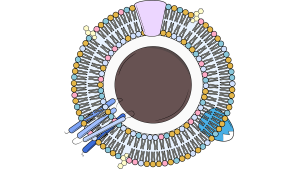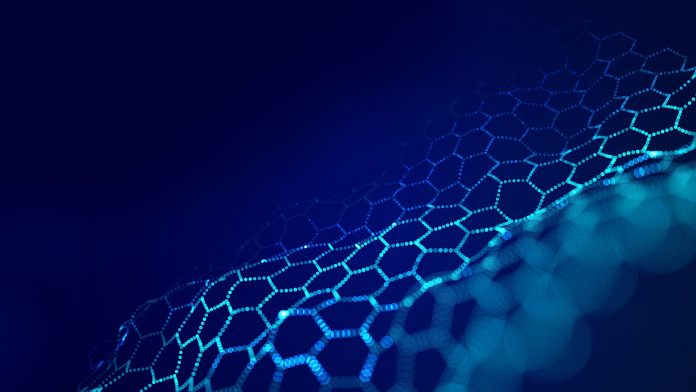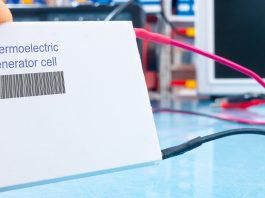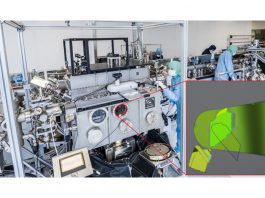Revolutionising healthcare, the Biogenic Organotropic Wetsuits (BOW) project fuses nanotechnology and biology, crafting transformative nanomedicine solutions.
Breakthroughs in Magnetic Bionanodevices and microfluidic engineering signal a paradigm shift in scientific progress.
In a fast-paced world of scientific innovation, a project named Biogenic Organotropic Wetsuits (BOW) – co-ordinated by Professor Paolo Bergese from the University of Brescia and the Italian Center for Colloids and Surface Science (CSGI) and funded by the European Commission. The project is taking centre stage, poised to transform the landscape of healthcare through the fusion of nanotechnology and biology.
The BOW project aims to create hybrid nanomaterials with the potential to open new possibilities in the field of nanomedicine.
Transforming tiny materials into tiny medicines
Nanomaterials have made significant strides as nanomedicines, offering novel diagnostics, drug delivery, imaging, and therapy solutions.
However, their clinical translation is often hindered by safety issues concerning intrinsic toxicity or persistence in the human body. Our cells represent natural factories of nanomaterials that could be optimal alternative candidates, either alone or in conjunction with synthetic counterparts.
One example is represented by Extracellular Vesicles (EVs), natural nanoparticles ‘made by cells, for cells’ that play a crucial role in exchanging active payloads between cells. EVs’ innate circulation and targeting performances originate in their membrane’s unique cell-tailored composition and structure, which is, to date, inaccessible to synthetic mimics.
The BOW project is capitalising on EV membranes’ high biocompatibility and active role in creating hybrid nanomaterials with augmented biological properties.
BOW technology explained
In the BOW project, several EV sources are considered, including human endometrial decidual tissue mesenchymal stem cells and microalgae, both on the rise as safe and sustainable sources. Within the realm of nanomaterials, Dr Manuel Antonio Gonzalez, a researcher at the University of Santiago de Compostela in the laboratory of Professor José Rivas, explained: “Magnetic nanostructures are a sample of what science is making available for a more efficient, safer, and sustainable nanomedicine.”
The possibility of manipulating them remotely using external magnetic fields makes these attractive for clinical uses in bioimaging (e.g. magnetic resonance imaging – MRI) and magnetic hyperthermia treatments – MHT. Magnetic nanoparticles, especially superparamagnetic iron oxide nanoparticles, form the core building blocks for BOW’s hybrid creations.
BOW hybrids are made possible by engineering a microfluidic device to fabricate extracellular vesicle membranes. Karl Normak, a researcher at ETH Zurich in Professor Paolo Arosio’s laboratory, said: “In a nutshell: We are creating a device that would take vesicles and nanoparticles and create hybrid vesicle-covered nanoparticles. Essentially, we have a balloon and a ball, and we are creating a device that would put the ball in the balloon. Just the balloon and the ball are very, very tiny; about 500 times smaller than a human hair.”
To elevate the BOW technology, the concept involves advancing the engineering of BOW hybrids by incorporating specific moieties. This aims to target specific tissues or organs while mitigating challenges associated with off-target effects. Dr Ana Mateos Maroto, researcher at the Max Plank Institute for Polymer Research in Professor Katharina Landfester’s laboratory, said this: “Would open the door to the design of new drug delivery systems with new properties for the treatment of specific diseases.”
The BOW project is a collaborative effort involving 16 scientific European institutions, each driven by the spirit of discovery. Dr Andrea Zendrini, a researcher at the CSGI, emphasises the project’s potential, she said: “Inside the project, we have all the necessary expertise to do cutting-edge research and create new exploitable applications, ultimately leading to advancements in the field of drug delivery and healthcare.” The BOW project aims to provide transformative healthcare solutions in the nanotechnology world. If successful, such technology will promote the progress of implantable nanodevices and nanomaterials towards sustainable production and contribute to strengthening and keeping European nanobiotechnology in the lead position.
Key achievements of the BOW project
In the realm of results, the BOW project has made significant strides in three key areas:
Results on the building blocks
Strategies for ensuring optimal handling, storage, and shipment of produced EVs have been achieved. Successful synthesis of single- and multi-core iron oxide Magnetic Bionanodevices (MBDs) has been achieved, demonstrating satisfactory stability and magnetisation.
The focus on MBD derivatisation, specifically adding optical functionality, has yielded promising preliminary results. Overall, the BOW project is on track, providing the consortium with prototypes for future use.
Results on the microfluidic device
The microfluidic device, designed to transfer EV membranes onto MBDs efficiently, progressed with two envisioned designs. The active-mixing device, capable of perturbing EV structures, along with two alternative configurations, was successfully developed.
Simultaneously, work on the passive-mixing device began, demonstrating encouraging preliminary results, including screening with liposomes and EVs. A proof-of-concept prototype for in-line monitoring of BOW hybrids at the device outlet was also successfully realised, utilising the detection of the size-related diffusion rate of magnetic nanoparticles.
Results on the biological screening
The primary objective was to initiate the evaluation of EVs and MBDs, the essential components of the BOW hybrids, to establish reference protocols and data. In vitro testing of samples focused on nanotoxicity, assessing parameters like cellular metabolism, plasma membrane damage, clonogenicity, DNA damage, and oxidative stress.
A mathematical toxicodynamic approach was employed to model the cytotoxicity of these nano-objects. In vivo imaging in mice (IVIS) provided insights into organ tropism and bio-kinetics. High-resolution intravital microscopy explored the cellular dynamics of MSC-EVs in the murine lung.

Notably, BOW products’ potential for diagnosing and treating pulmonary inflammation and fibrosis was identified, particularly relevant in the post-COVID era. Subsequent exploration of BOW products’ applicability, both in vitro and in vivo, is underway, including investigations in a mouse model of Acute Lung Injury (ALI) with inhalation administration.
A beacon of scientific progress
In conclusion, the Biogenic Organotropic Wetsuits (BOW) project stands as a beacon of scientific progress at the intersection of nanotechnology and biology, with a transformative vision for healthcare.
The project addresses safety concerns by leveraging the properties of Extracellular Vesicles and magnetic nanostructures and paves the way for innovative applications.
BOW has demonstrated tangible progress with remarkable achievements in the synthesis of Magnetic Bionanodevices, advancements in microfluidic device engineering, and groundbreaking biological screenings. The numbers speak volumes, with over 30 papers published, eight Key Exploitable Results identified, and a dynamic team of researchers contributing to this cutting-edge exploration. BOW’s commitment to knowledge-sharing, showcased through initiatives like an international PhD winter school and public deliverables, highlights its dedication to real-world impact.
As BOW continues its journey, the promise of transformative healthcare solutions and sustainable advancements in nanobiotechnology positions it as a pioneering force in scientific discovery.
Please note, this article will also appear in the seventeenth edition of our quarterly publication.









